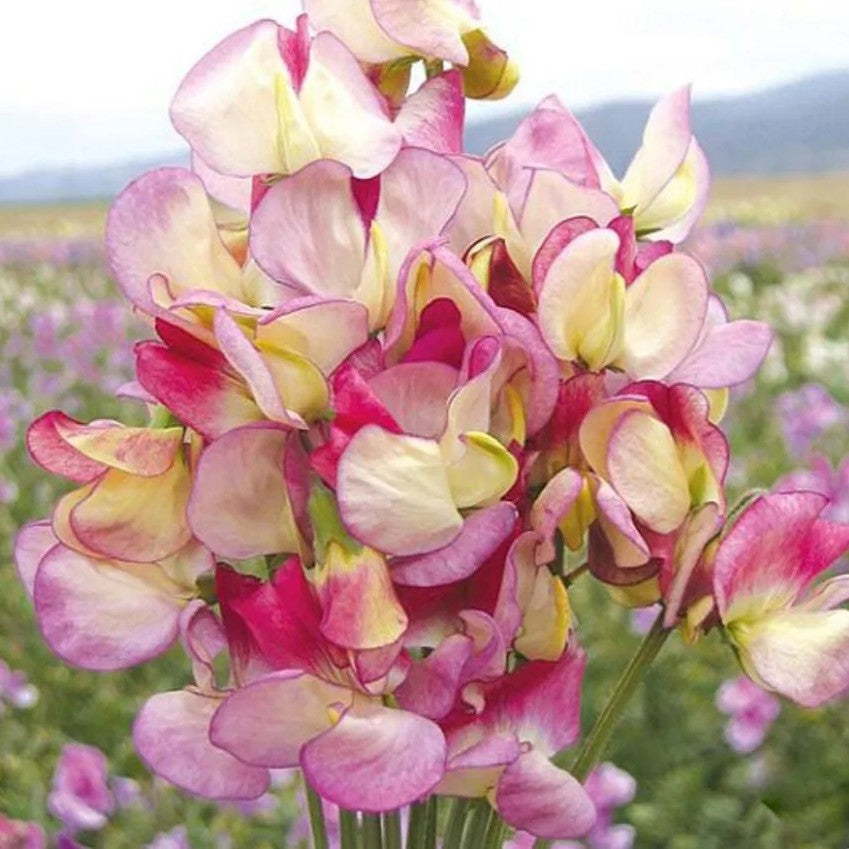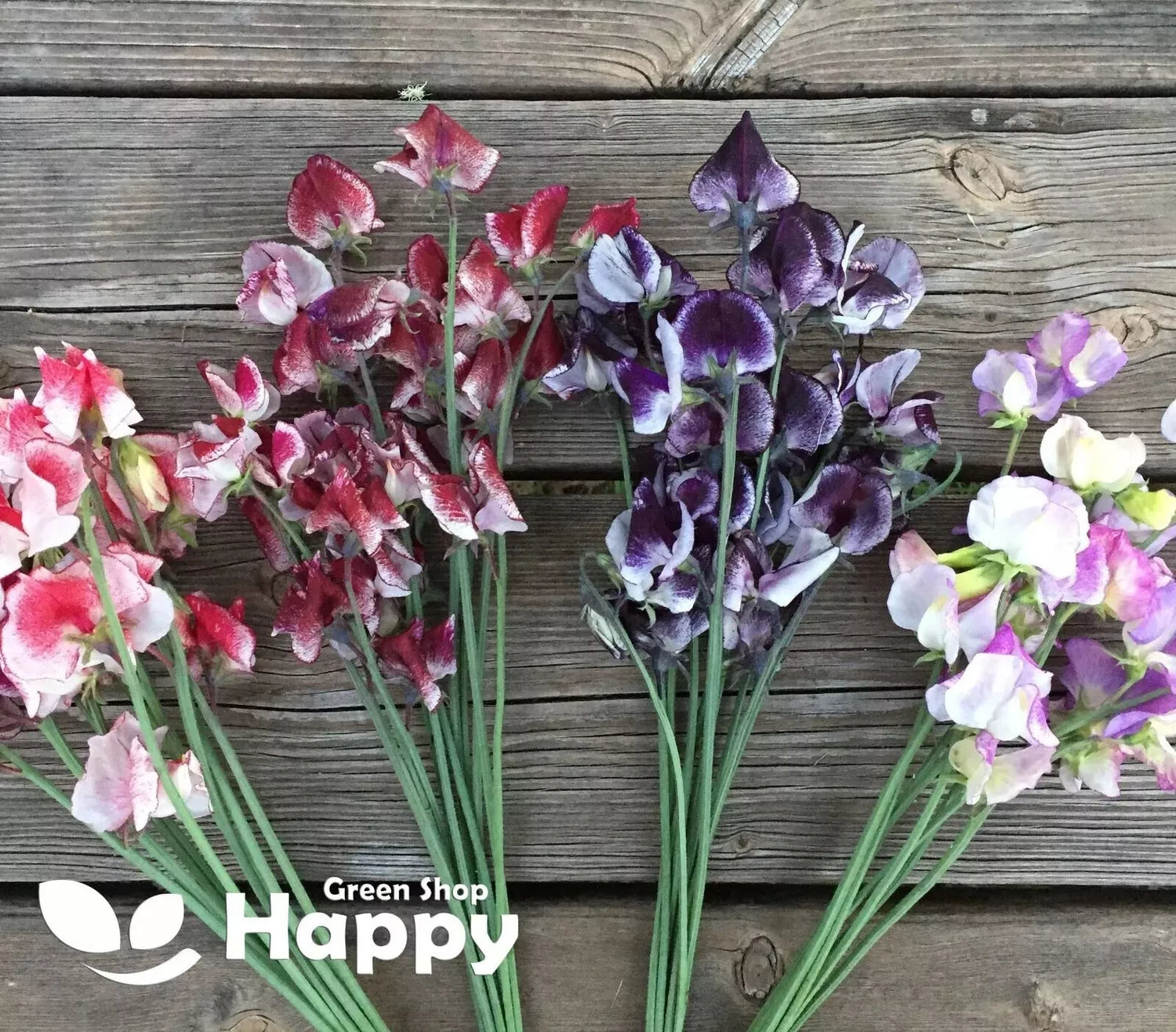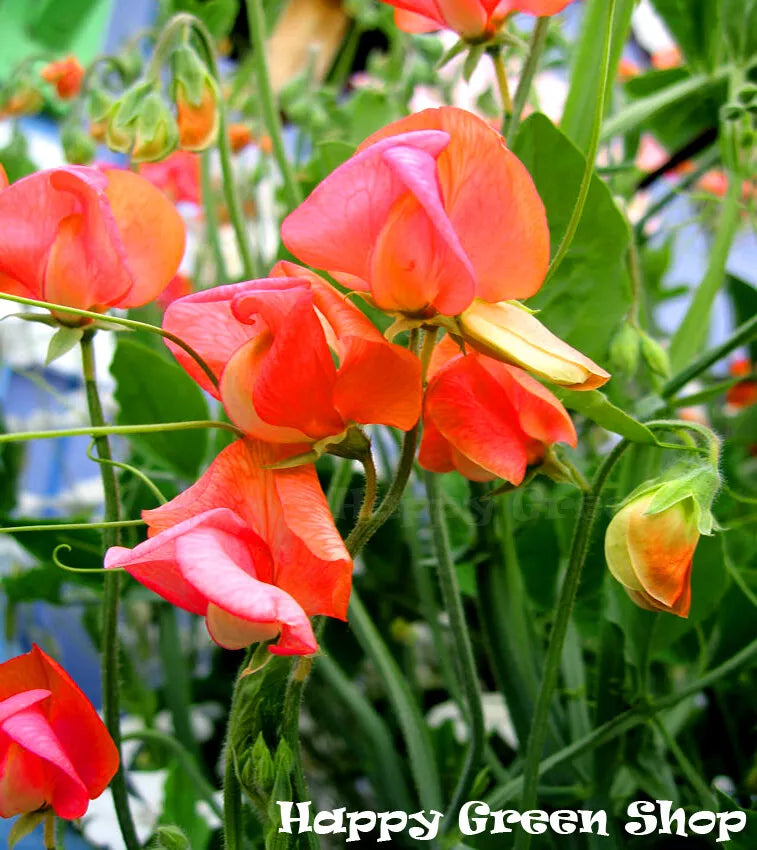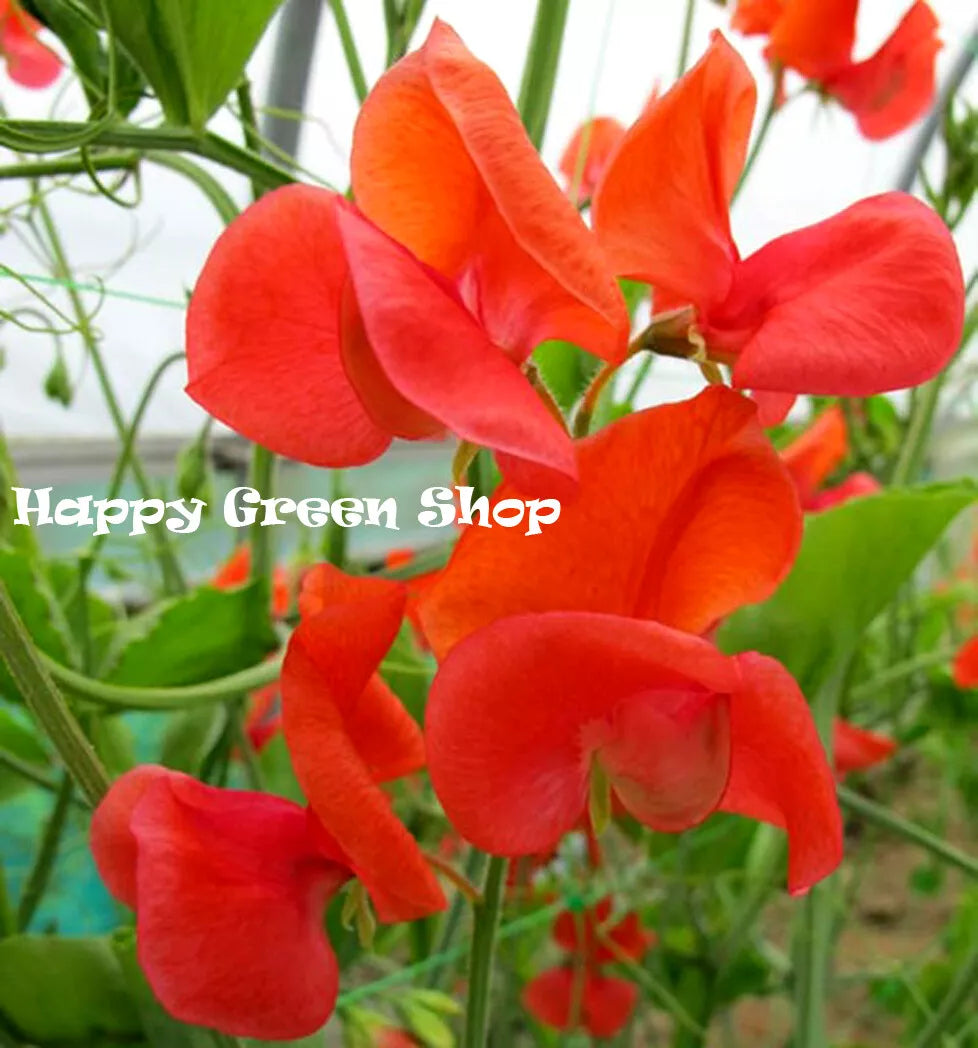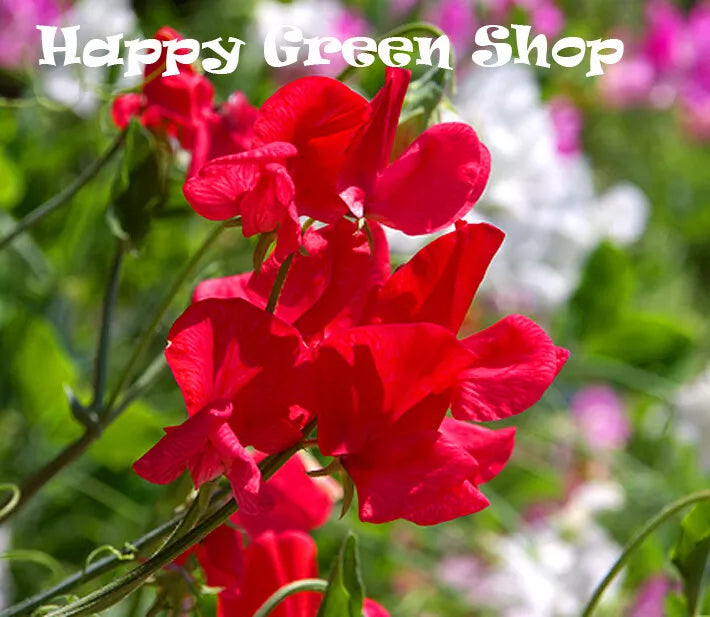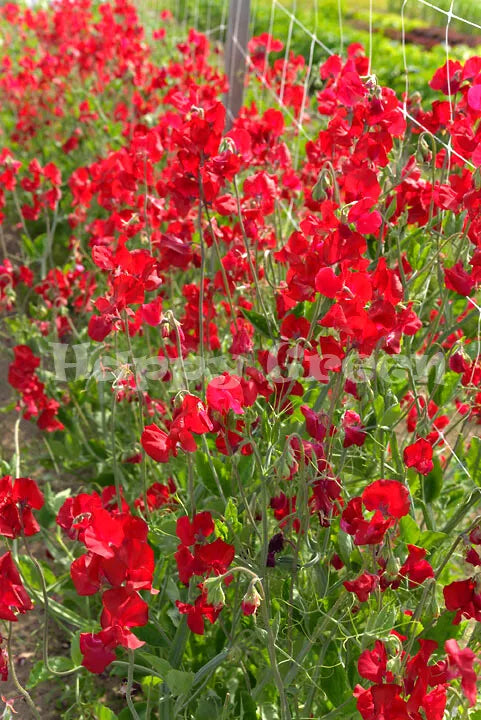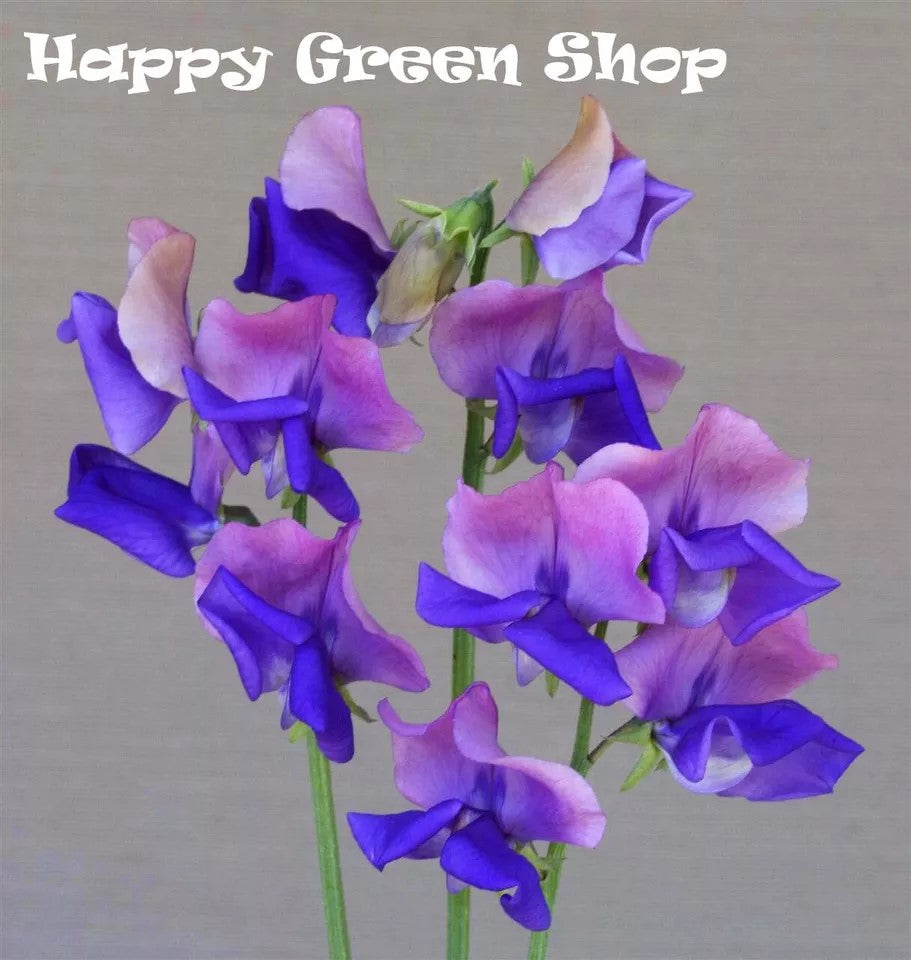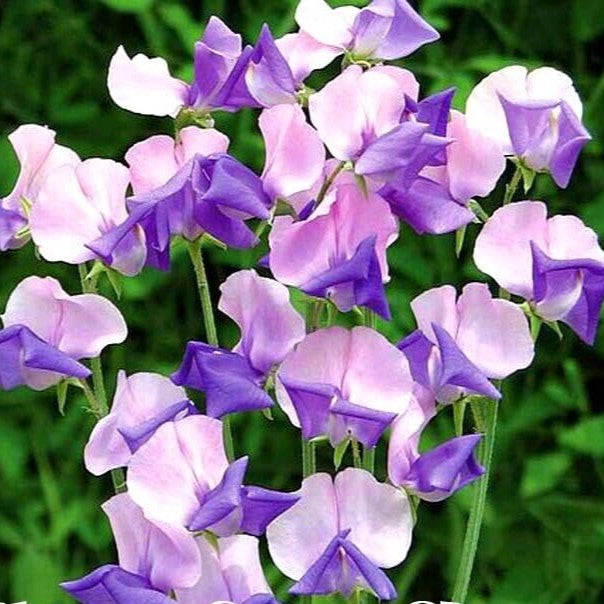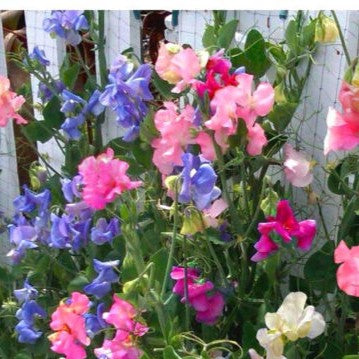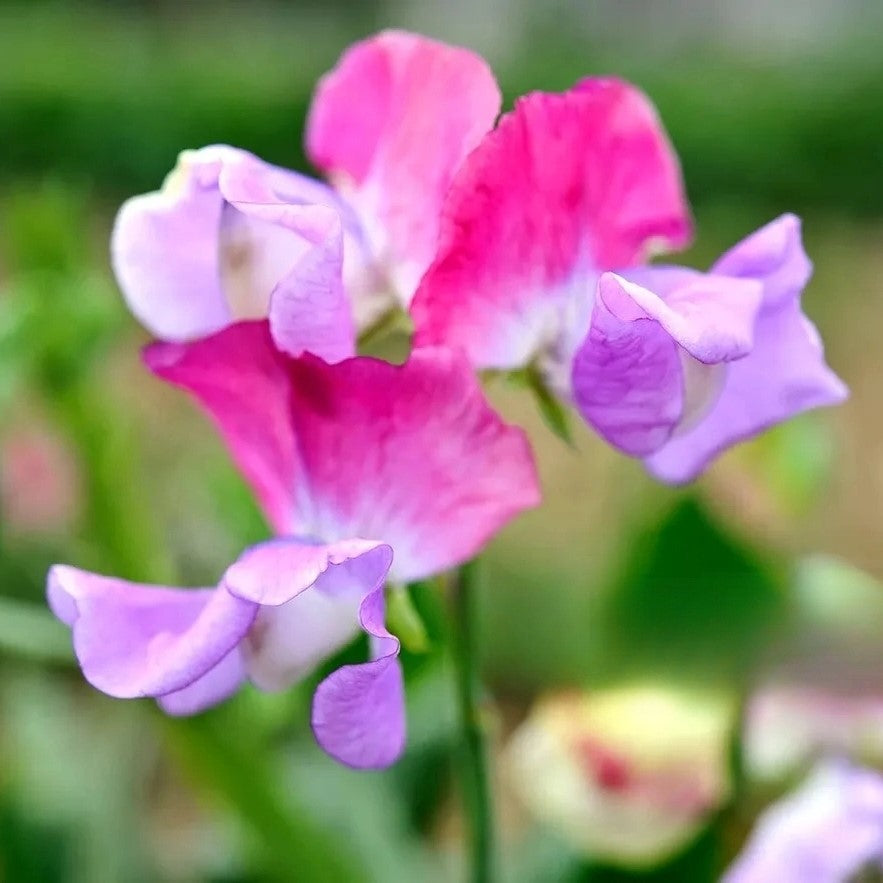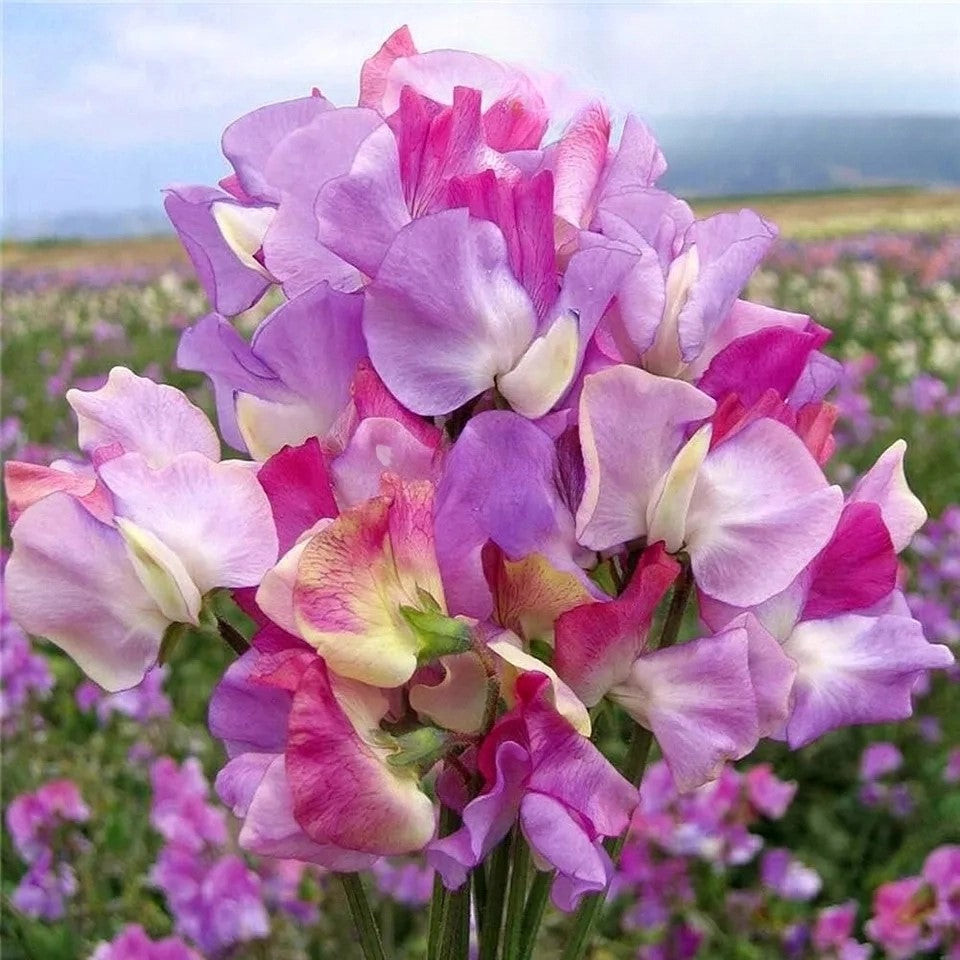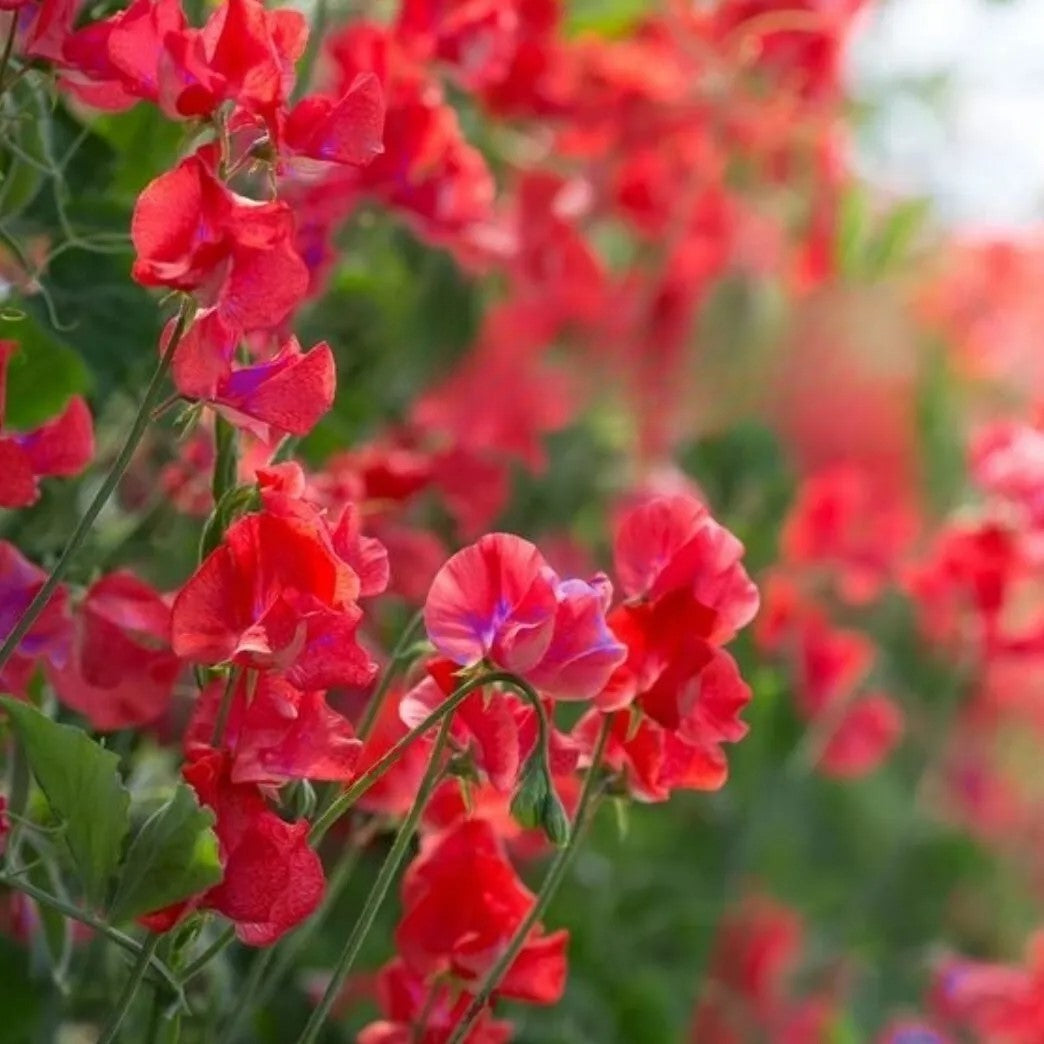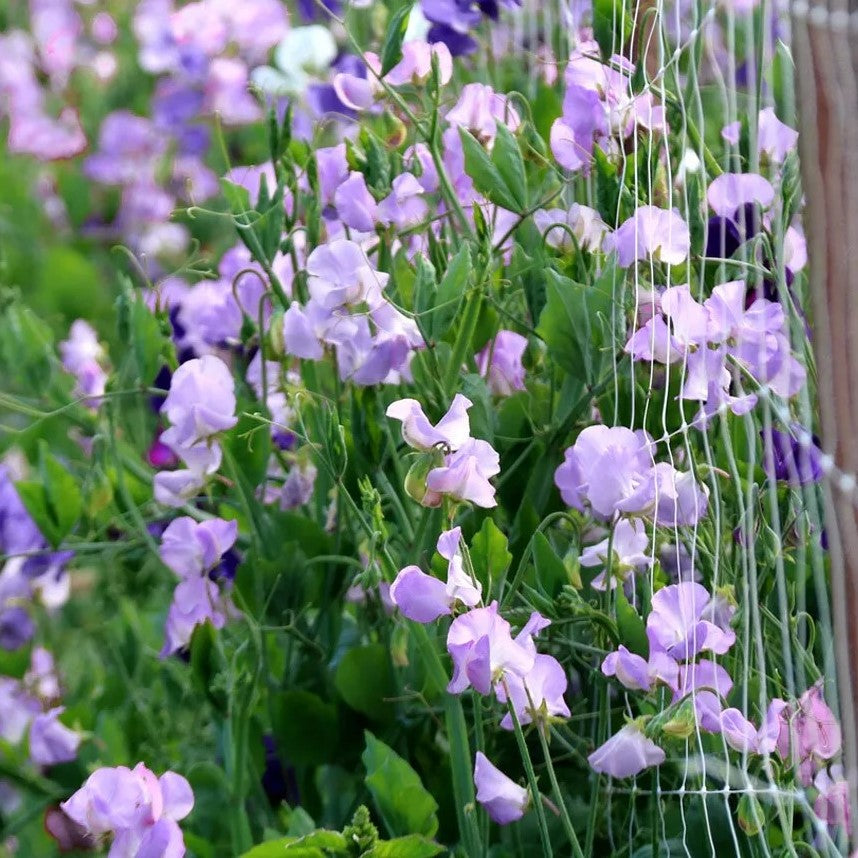Sort by:
63 products
63 products
Sweet Pea ‘Spanish Dancer’ Seeds (Lathyrus odoratus)
Add elegance and fragrance to your garden with Sweet Pea ‘Spanish Dancer’ (Lathyrus odoratus). This climbing annual produces exquisite, vibrant pink flowers with a striking magenta edge and a delightful scent. Ideal for trellises, fences, and pergolas, it’s a stunning addition for borders, containers, and cut flower arrangements.
How to Grow
-
Sow seeds indoors in late winter or early spring, or directly outdoors after the last frost.
-
Soak seeds overnight to improve germination.
-
Use well-drained soil in a sunny location.
-
Cover seeds lightly with soil and keep moist until germination (10–14 days).
-
Provide support such as trellises, fences, or netting for climbing.
-
Pinch out the tips of young plants to encourage bushier growth and more blooms.
Key Features
-
Vibrant pink flowers with magenta edges
-
Fragrant, climbing annual perfect for vertical displays
-
Long-flowering, from late spring through summer
-
Excellent for cut flowers and bouquets
-
Attracts pollinators such as bees and butterflies
Ideal For
-
Trellises, pergolas, fences, and arches
-
Flower borders and cottage gardens
-
Containers and patio planters with support
-
Cut flower arrangements for home decoration
Sowing
-
Best time: Late winter to early spring indoors, or after frost outdoors
-
Germination: 10–14 days
-
Pre-soak seeds for best results
-
Prefers full sun and well-drained soil
Quick Tip
-
Regularly remove spent flowers to prolong blooming and maintain vigorous growth.
Sweet Pea 'Ripple' Mixed – Seeds
(Lathyrus odoratus)
Sweet Pea 'Ripple' Mixed is a delightful climbing annual featuring a mix of soft pastel blooms in pinks, creams, and lavenders with a sweet, intoxicating fragrance. Its long, sturdy stems are ideal for cutting, while its vigorous climbing habit makes it perfect for trellises, fences, and arches. A must-have for adding vertical interest, colour, and scent to summer gardens.
Key Features
-
Type: Hardy annual
-
Height: 180–240 cm (climber)
-
Flowering: June–September
-
Position: Full sun
-
Soil: Fertile, well-drained
-
Uses: Trellises, fences, arches, cut flowers
Ideal For
-
Vertical garden displays
-
Cut flower arrangements
-
Cottage-style gardens
-
Fragrant garden corners
Sowing & Growing
-
Sow indoors: January–April in pots or trays
-
Sow outdoors: April–May directly in soil
-
Germination: 10–20 days at 15–20°C
-
Plant out after last frost, spacing 20–30 cm
-
Provide climbing support
-
Regular deadheading encourages more blooms
Sweet Pea 'Prince of Orange' – 25 Seeds (Lathyrus odoratus)
Bring a warm glow to your garden with Sweet Pea 'Prince of Orange'. This striking variety showcases large, richly scented flowers in glowing shades of orange, apricot, and coral. A vigorous climber, it creates a stunning display on trellises, arches, or fences and produces long stems ideal for cut flowers.
Why Grow 'Prince of Orange'
-
Glowing orange-apricot blooms
-
Strong, sweet fragrance
-
Excellent cut flower variety
-
Vigorous climbing habit
Key Features
-
Type: Hardy annual (Lathyrus odoratus)
-
Height: 180–240 cm (climber)
-
Flowering: June–September
-
Position: Full sun
-
Uses: Trellises, arches, fences, cut flowers
Ideal For
-
Cottage gardens and borders
-
Vertical displays on arches and trellises
-
Cutting gardens
-
Fragrant summer bouquets
Sowing & Growing
-
Sow indoors: January–April in pots/trays
-
Sow outdoors: April–May directly into soil
-
Germination: 10–20 days at 15–20°C
-
Plant out after last frost, spacing 20–30 cm
-
Provide strong climbing support
-
Regular deadheading encourages more blooms
Sweet Pea 'Mammoth Scarlet' – 20 Seeds (Lathyrus odoratus)
Bring bold color and fragrance to your garden with Sweet Pea 'Mammoth Scarlet'. This vigorous variety produces large, brilliantly scarlet blooms on long stems, perfect for cutting. A climbing sweet pea, it makes a striking display on trellises, fences, and arches.
Why Grow 'Mammoth Scarlet'
-
Striking scarlet-red flowers
-
Sweetly scented and long-lasting
-
Excellent for cut flowers
-
Vigorous climbing habit
Key Features
-
Type: Hardy annual (Lathyrus odoratus)
-
Height: 180–240 cm (climber)
-
Flowering: June–September
-
Position: Full sun
-
Uses: Trellises, fences, arches, bouquets
Ideal For
-
Cottage and cutting gardens
-
Vertical displays and arches
-
Fragrant summer arrangements
-
Bold splashes of color in borders
Sowing & Growing
-
Sow indoors: January–April in pots/trays
-
Sow outdoors: April–May directly into soil
-
Germination: 10–20 days at 15–20°C
-
Plant out after last frost, spacing 20–30 cm
-
Provide strong climbing support
-
Deadhead regularly to prolong flowering
Sweet Pea 'Erewhon' – Seeds (Lathyrus odoratus)
A truly unique sweet pea, 'Erewhon' is admired for its unusual bicolor flowers. Each bloom displays soft lavender-blue standards above rich deep-purple wings, creating a striking contrast. With a strong, sweet fragrance, this climbing annual is a favorite for both garden displays and cutting.
Why Grow Sweet Pea 'Erewhon'?
-
Rare and eye-catching bicolor blooms
-
Strong, classic sweet pea fragrance
-
Excellent for cutting and arrangements
-
Long flowering season with regular picking
Key Features
-
Type: Hardy annual climber
-
Height: 180–200 cm
-
Flowers: Summer
-
Position: Full sun, rich well-drained soil
-
Support: Requires trellis, netting, or canes
Ideal For
-
Trellises, fences, and obelisks
-
Cottage gardens and scented borders
-
Cutting for vases and bouquets
-
Attracting bees and butterflies
Sowing & Growing
-
Sow indoors: January–March in pots, or directly outdoors in April–May
-
Germination: 10–21 days at 15–18°C
-
Plant out after frost, spacing 20–25 cm apart
-
Regularly cut flowers to encourage more blooms
Tip: Soak seeds overnight before sowing to aid germination.
Sweet Pea ‘Bijou’ Dwarf Mix – Seeds (Lathyrus odoratus)
Sweet Pea ‘Bijou’ Dwarf Mix is a charming, compact annual ideal for small gardens, containers, and borders. It produces clusters of fragrant, vibrant blooms in a range of colors, including pink, purple, white, and crimson. Its dwarf habit makes it perfect for low trellises, obelisks, or window boxes, bringing scent and color to every corner of the garden.
Why Grow "Bijou Dwarf Mix"
-
Compact plants ideal for small spaces
-
Fragrant, colorful blooms in multiple shades
-
Long flowering season for continuous garden color
-
Perfect for borders, containers, and low supports
Key Features
-
Type: Annual climber (Lathyrus odoratus)
-
Height: 30–50 cm
-
Flowering: Summer
-
Position: Full sun
-
Uses: Borders, containers, trellises, window boxes, cut flowers
Ideal For
-
Small gardens and container planting
-
Low trellises, obelisks, and window boxes
-
Adding fragrance and color to summer displays
-
Gardeners seeking compact, easy-to-grow sweet peas
Sowing & Growing
-
Sow indoors: February–April
-
Sow outdoors: After last frost in well-drained soil
-
Germination: 10–20 days at 15–20°C
-
Space seedlings: 20–25 cm apart
-
Provide support for climbing
Sweet Pea 'Prima Ballerina Tricolor' Seeds (Lathyrus odoratus)
A striking and elegant variety, Sweet Pea 'Prima Ballerina Tricolor' delights with its unique mix of pink, white, and lilac blooms. These beautifully ruffled flowers carry the classic sweet pea fragrance, making them a favorite for both gardens and cut flower arrangements. A vigorous climber, it’s perfect for trellises, arches, and fences, adding vertical color and charm all summer long.
Why Grow 'Prima Ballerina Tricolor'
-
Distinctive tricolor blooms in soft pink, lilac, and white
-
Classic sweet pea fragrance
-
Ideal for cutting – long stems and elegant flowers
Key Features
-
Type: Hardy annual
-
Height: 180–240 cm (climber)
-
Flowering: June–September
-
Position: Full sun
-
Uses: Trellises, fences, cut flowers, cottage gardens
Sowing & Growing
-
Sow indoors: January–April in pots or trays
-
Sow outdoors: April–May in prepared soil
-
Germination: 10–20 days at 15–20°C
-
Plant out after frost, spacing 20–30 cm apart
-
Provide support for climbing
-
Deadhead regularly for continuous flowering
Sweet Pea "Philip Miller Red" Seeds (Lathyrus odoratus)
Bring a touch of timeless elegance to your garden with Sweet Pea "Philip Miller Red". This classic variety is celebrated for its large, vibrant crimson-red flowers and strong fragrance. A vigorous climber, it creates a stunning display on trellises, arches, or fences and produces long stems perfect for cutting.
Why Grow "Philip Miller Red"
-
Striking deep crimson-red blooms
-
Strong, sweet fragrance
-
Excellent cut flower variety
-
Traditional heritage sweet pea
Key Features
-
Type: Hardy annual
-
Height: 180–240 cm (climber)
-
Flowering: June–September
-
Position: Full sun
-
Uses: Trellises, fences, arches, cut flowers
Sowing & Growing
-
Sow indoors: January–April in pots/trays
-
Sow outdoors: April–May directly in soil
-
Germination: 10–20 days at 15–20°C
-
Plant out after last frost, spacing 20–30 cm
-
Provide climbing support
-
Regular deadheading encourages more blooms
Sweet Pea "Lady Grisel Hamilton" – Seeds (Lathyrus odoratus)
Sweet Pea "Lady Grisel Hamilton" (Lathyrus odoratus) is a timeless heritage variety, prized for its large, wavy blooms in a beautiful soft lavender-blue shade. With a strong, sweet fragrance, this climbing annual is perfect for arches, trellises, and fences, while its long stems make it an excellent choice for cutting. Blooming from summer to early autumn, it combines elegance, color, and perfume in any garden.
Why Grow "Lady Grisel Hamilton"
-
Soft lavender-blue, wavy blooms
-
Strong, sweet fragrance
-
Excellent for cut flowers
-
Classic heritage sweet pea variety
Key Features
-
Type: Hardy annual (Lathyrus odoratus)
-
Height: 180–240 cm (climber)
-
Flowering: Summer to early autumn
-
Position: Full sun
-
Uses: Trellises, arches, fences, cut flowers, cottage gardens
Ideal For
-
Adding fragrance and color to vertical displays
-
Trellises, arches, and fence planting
-
Traditional cottage gardens
-
Cutting for indoor floral arrangements
Sowing & Growing
-
Sow indoors: January–April in pots or trays
-
Sow outdoors: April–May directly in soil
-
Germination: 10–20 days at 15–20°C
-
Plant out after last frost, spacing 20–30 cm
-
Provide support for climbing and regular deadheading
Showing 27/63





